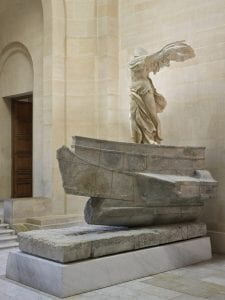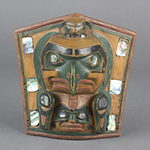
Greek (Hellenistic), Nike of Samothrace, ca. 190 BCE, Musée du Louvre, Paris
The Louvre – maybe the most famous museum in the world — has launched a new website. Its central feature is a collections database that gives you access to nearly half a million works of art (they claim that the museum’s entire collection is now online, although this is probably not even all of it). This is a major upgrade from the Louvre’s old site, which included only a limited selection of works, often with images too small to be very useful.
For many of the Louvre’s treasures, a variety of images are now available (including details and alternate views), which is an especially welcome feature. You can download these images at a maximum of 1500 pixels, which is a reasonable size for using in a PowerPoint presentation, but not large enough for publication. Keep in mind that the Louvre is still not an open-access institution, so while you may use these images for personal study or teaching, you are not allowed to publish or otherwise distribute them. And although much of the museum’s website is available in English, most of the information in the collections database is only in French.
You can read more in the Louvre’s press release.



![Caradosso, Pope Julius II [obverse] and View of Saint Peter's [reverse], 1506 (photo: Courtesy National Gallery of Art, Washington)](https://sites.udel.edu/vrc/files/2015/09/julius2-1zx0us2-150x150.jpg)